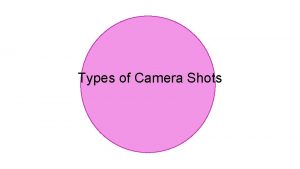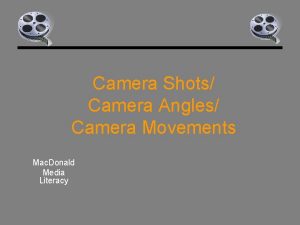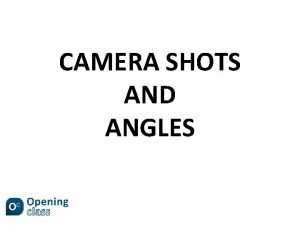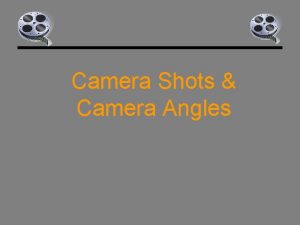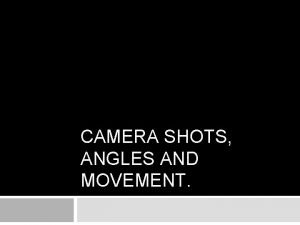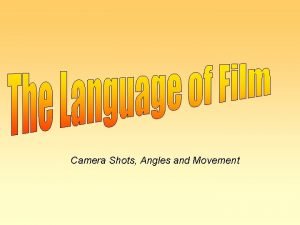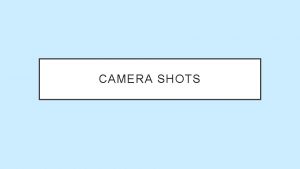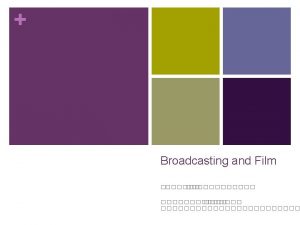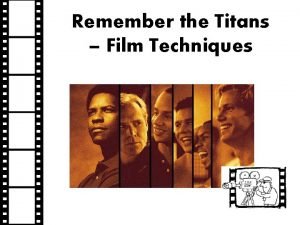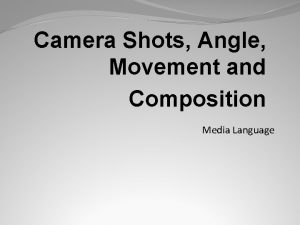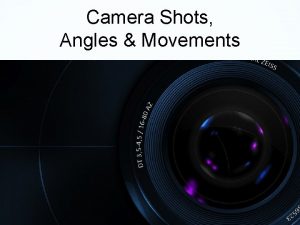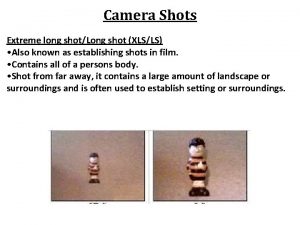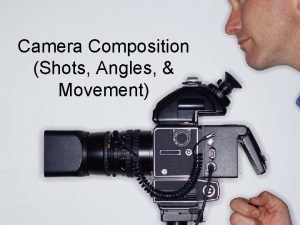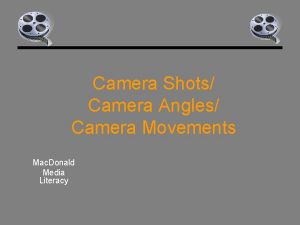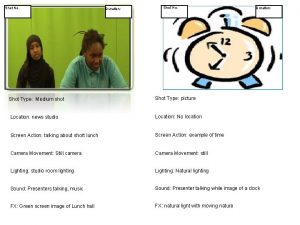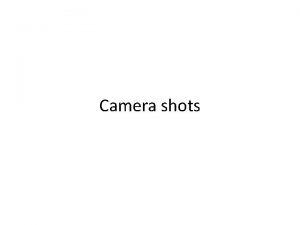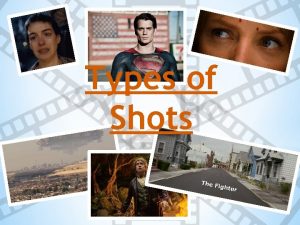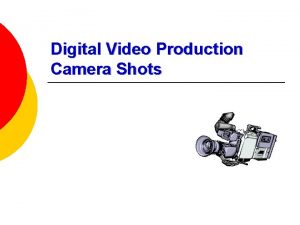CAMERA SHOTS AND ANGLES Extreme Long Shot Often












- Slides: 12

CAMERA SHOTS AND ANGLES

Extreme Long Shot Often used for 1 of 2 reasons: 1) As an establishing shot (also called a master shot), to draw attention to where a scene is going to take place. OR 2) To show a person, group of people or object as part of a landscape. The shot focuses the audience’s attention on the environment and the actor’s or object’s position and size within the environment.

Long Shot Also known as a ‘full shot’, a person can be seen from head-to-toe. Often used to focus the audience’s attention on a character’s body language or the relationship of the character to their immediate surroundings.

Medium Shot Mid shots or Medium shots cut the character(s) off at the waist. This kind of shot is often used when characters are in conversation. The shot draws attention to the body language of the characters.

Close-Up Usually focuses on a character’s face, directing the audience’s attention to the emotion of the character through focussing on the actor’s expression. A close up can also focus on an object or symbol. This can draw attention to the significance of the object within the narrative.

Extreme Close-Up A shot that is closer to its object than a close-up is. When focused on an actor, this means that one aspect of their face, such as their eyes or mouth, is the only thing within the frame. Such shots are used for dramatic emphasis, drawing the audience’s attention to a very specific body part or object.

High Angle The camera is placed high, looking down upon a character or object. This positions the audience to see the subject as being small, weak, insignificant, or powerless.

Eye Level / Normal Angle The camera is on the same level as the character’s eyes. This often develops or maintains a sense of realism. When two or more characters are talking to each other, it creates a sense of equality between them.

Low Angle The camera is placed low, looking up at a character or object. This positions the audience to see the subject of the shot as being huge, powerful, strong or intimidating.

Over the Shoulder Shot (OTS) A shot looking over the shoulder of a character at a setting or at other characters. Often provides the audience with a sense of the character’s perspective, or with a sense as to how the character is positioned in relation to the rest of the scene.

Two Shot A two shot displays two characters in the same scene. This usually draws attention to the dynamics between the characters as implied by the amount of space they take up on screen. One might have more power or importance than the other, or they might be on equal footing.

Dutch Angle / Dutch Tilt A shot in which the camera is set on an angle, so that the bottom of the frame is not parallel to the ground. These angles are often used to create artistic or engaging frames, and can often have a symbolic purpose such as to imply that a character is disoriented or imbalanced.

